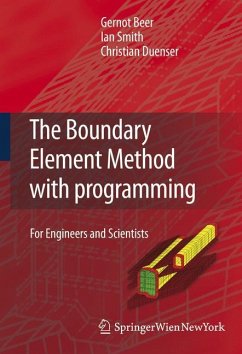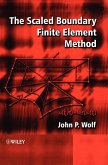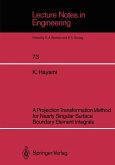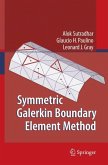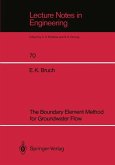This thorough yet understandable introduction to the boundary element method presents an attractive alternative to the finite element method. It not only explains the theory but also presents the implementation of the theory into computer code, the code in FORTRAN 95 can be freely downloaded. The book also addresses the issue of efficiently using parallel processing hardware in order to considerably speed up the computations for large systems. The applications range from problems of heat and fluid flow to static and dynamic elasto-plastic problems in continuum mechanics.
This is a sequel to the book "Programming the Boundary Element Method" by G. Beer published by Wiley in 2001. The scope of this book is different however and this is reflected in the title. Whereas the previous book concentrated on explaining the implementation of a limited range of problems into computer code and the emphasis was on programming, in the current book the problems covered are extended, the emphasis is on explaining the theory and computer code is not presented for all topics. The new topics covered range from dynamics to piezo-electricity. However, the main idea, to provide an explanation of the Boundary Element Method (BEM), that is easy for engineers and scientists to follow, is retained. This is achieved by explaining some aspects of the method in an engineering rather than mathematical way. Another new feature of the book is that it deals with the implementation of the method on parallel processing hardware. I. M. Smith, who has been involved in programming thefinite element method for decades, illustrates that the BEM is "embarrassingly parallelisable". It is shown that the conversion of the BEM programs to run efficiently on parallel processing hardware is not too difficult and the results are very impressive, such as solving a 20 000 element problem during a "coffee break".
This is a sequel to the book "Programming the Boundary Element Method" by G. Beer published by Wiley in 2001. The scope of this book is different however and this is reflected in the title. Whereas the previous book concentrated on explaining the implementation of a limited range of problems into computer code and the emphasis was on programming, in the current book the problems covered are extended, the emphasis is on explaining the theory and computer code is not presented for all topics. The new topics covered range from dynamics to piezo-electricity. However, the main idea, to provide an explanation of the Boundary Element Method (BEM), that is easy for engineers and scientists to follow, is retained. This is achieved by explaining some aspects of the method in an engineering rather than mathematical way. Another new feature of the book is that it deals with the implementation of the method on parallel processing hardware. I. M. Smith, who has been involved in programming thefinite element method for decades, illustrates that the BEM is "embarrassingly parallelisable". It is shown that the conversion of the BEM programs to run efficiently on parallel processing hardware is not too difficult and the results are very impressive, such as solving a 20 000 element problem during a "coffee break".

